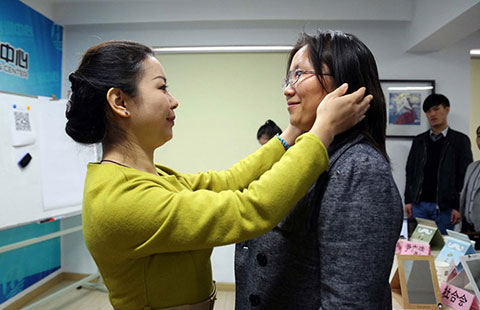Hainan looks to expand its appeal
By ANDREW MOODY/JIANG WANJUAN/LIU XIAOLI (China Daily) Updated: 2015-07-20 07:45"A cruise ship can stop for seven or eight hours and people can visit the city. When they go home they can tell people about Sanya," she said.
Sanya is at the vanguard of Hainan's efforts to become an international tourist destination by 2020, with visitor numbers growing 17.9 percent annually for the past five years.
Hotel room capacity has increased by 7 percent over the past five years, and another 50 hotels are set to be built within four years.
"One of the problems of Sanya is it is often known only in China and people who own yachts but not by the mass market, and that is what we want to address," she said.
Lily Chen, marketing manager of Sanya Visun Royal Yacht Club, a prime haunt of the Chinese superrich, said business has been affected by the government's anti-corruption campaign.
The club has 800 members-almost all Chinese-paying 198,000 yuan for five years' membership.
"The economy also has not really been that good over the past two years, and that has affected business."
She said many Chinese buy yachts just to entertain people in the marina.
"Many actually don't know how to sail, so they use the yacht to meet friends. We are keen to educate members and teach them how to sail," she said.
Briggs at Wendy Wu Tours said one of the best opportunities for Hainan is to attract second-and third-time visitors to China who have already seen the Great Wall, the Forbidden City in Beijing and the 21st-century Shanghai shopping malls.
"It could be attractive for those who have been to China before and have done all the bucket list sites," he said.
"They might want to add a beach destination for a few days at the end of the trip."
Retired teachers Lynne Skeith, 63, and her husband, Trevor, 66, from Repton in Derbyshire in the UK, who visited Beijing, Shanghai and Xi'an on their first China trip in 2011, are among those who might be receptive to this.
"If we were to go back, we are not really fully aware of what Hainan has to offer. We are not averse to a couple of days by the pool or beach, but we like sightseeing and culture. We are more likely to use it as a drop-off point on a cruise," said Lynne Skeith.
One of the aims of the tourism planners is to open up the inland areas to tourism to boost the local economies.
Qionghai in eastern Hainan has villages that date back to the Song Dynasty (960-1279). Wanning boasts tropical forests and magnificent landscapes.
Speaking late at night at Qionghai's Old House coffee shop-with its green-tiled roof an example of centuries old traditional architecture-Yang Fen, director of Qionghai Tourism, said tourism is now vital for the local economy.
Before 2012, 85 percent of the city's GDP came from real estate sales with tourism generating just 10 percent. But that model became unsustainable. Last year, up to 30 percent of the local economy was generated by tourism, he said.
"We are very keen to promote our culture to the outside world. Most tourists are from Southeast Asia, but we are keen to attract Westerners, too," he said.
There are a number of theme parks and other attractions in central Hainan.
One is the Xinglong Tropical Garden, which has been recognized by the United Nations for its environmental work, and was set up by former architect Colin Cheng Wen Thay in 1992.
Spread over 400 hectares, it has 4,000 different species of plants.
It is the lifework of the lithe and sun-burnished Cheng, 70, who was born in Indonesia.
"The visitors often assume I am the gardener since I am often doing physical work," he said, puffing on a State Express 555 in his magnificent wood-constructed house on the estate.
"We get many international tourists, but mostly from Southeast Asia. Those from the US or Europe are mainly overseas Chinese."
Some may question whether tourism should be part of the Belt and Road Initiative, which is often seen as geopolitical and about securing trade routes.
Jim Stoopman, program coordinator of the European Institute for Asian Studies, a think tank based in Brussels and Luxembourg, insists tourism could actually be central to the initiative.
"Despite maybe not being strategic in the pure political or economic sense, tourism could be the foundation from which the Belt and Road Initiative turns into a global success," he said.
"I think it is more than just about infrastructure building and the enhancement of intra-regional trade. I see it as a grand 'social project' in which people from different regions, social classes, religions and cultures get a better chance to interact. Tourism and other people-to-people exchanges are a great vehicle for this."
- 2015 China International Fair for Investment and Trade kicks off in Xiamen
- China's commodity imports robust in Jan-Aug period
- China stocks rebound 2.92%
- 2015 China box office already past 2014 total
- China foreign trade decline widens in August
- Interview: JP Morgan's senior executive bullish on China
- Innovation, development the focus for NZ mayors
- Lives of freelancers

















